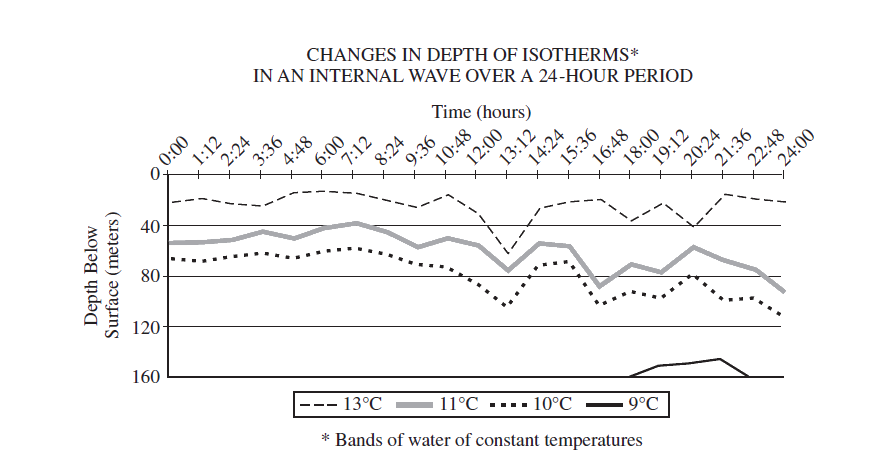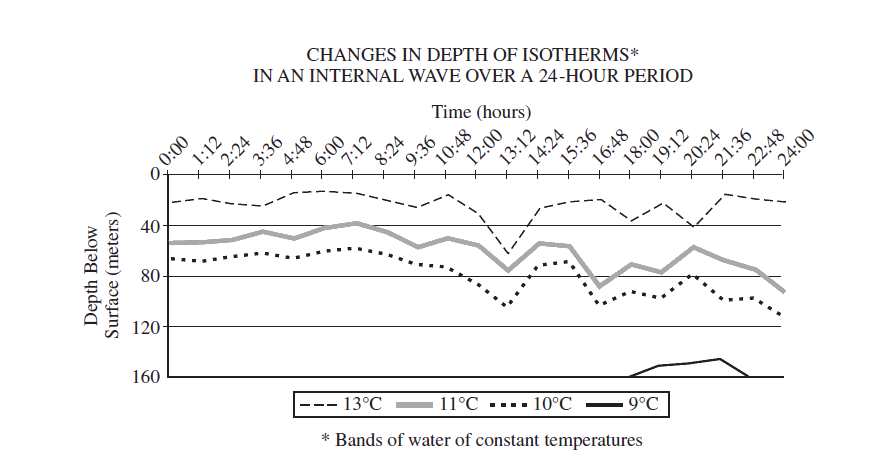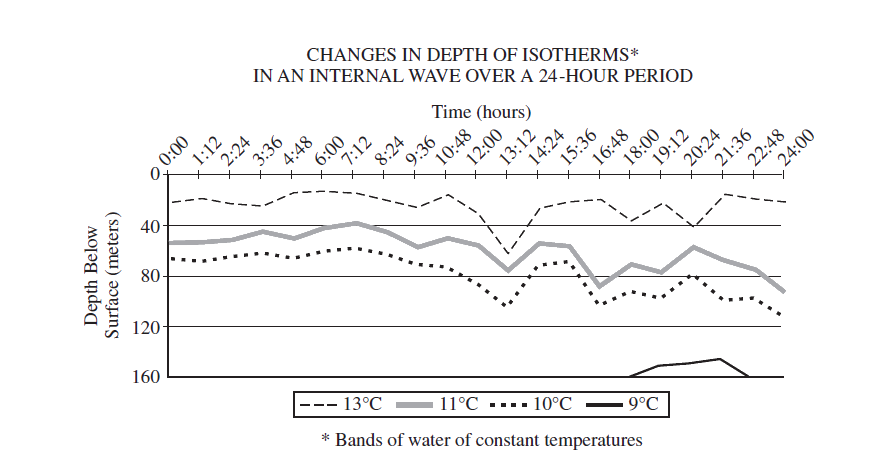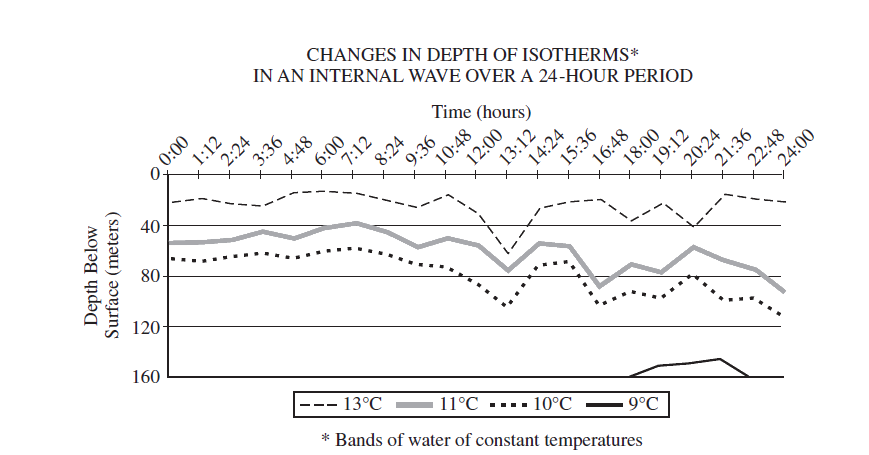In the serological test, if serum of human is mixed separately with the serum of ape, old world monkey new world monkey and lemur, then the increasing order of degree of precipitation will be
Ape, new world monkey, old world monkey, lemur
Lemur, new world monkey, old world monkey ape
New world monkey, old world monkey, ape, lemur
Ape, old world monkey, new world monkey, lemur
To solve the question regarding the increasing order of degree of precipitation when human serum is mixed with the serum of various primates, we can follow these steps:
1. Identify the Primates: We have four groups to consider: lemurs, new world monkeys, old world monkeys, and apes.
2. Understand Genetic Relatedness: The degree of precipitation in serological tests is influenced by the genetic similarity between the species. The more genetically similar the species are, the higher the degree of precipitation will be.
3. Rank the Primates Based on Genetic Similarity to Humans:
- Lemurs: These are primitive primates and are the least related to humans. Therefore, they will show the least precipitation.
- New World Monkeys: These monkeys are also less related to humans compared to old world monkeys and apes, but more related than lemurs.
- Old World Monkeys: These monkeys, such as rhesus monkeys, have a closer genetic relationship to humans than new world monkeys, resulting in a higher degree of precipitation.
- Apes: Among the primates, apes (especially chimpanzees) are the closest relatives to humans, showing the highest degree of precipitation.
4. Establish the Order of Precipitation: Based on the genetic relationships, we can establish the increasing order of precipitation:
- Lemurs (least precipitation)
- New World Monkeys
- Old World Monkeys
- Apes (most precipitation)
5. Final Answer: The increasing order of degree of precipitation when human serum is mixed with the serum of these primates is:
- Lemurs < New World Monkeys < Old World Monkeys < Apes
- Lemurs: These are primitive primates and are the least related to humans. Therefore, they will show the least precipitation.
- New World Monkeys: These monkeys are also less related to humans compared to old world monkeys and apes, but more related than lemurs.
- Old World Monkeys: These monkeys, such as rhesus monkeys, have a closer genetic relationship to humans than new world monkeys, resulting in a higher degree of precipitation.
- Apes: Among the primates, apes (especially chimpanzees) are the closest relatives to humans, showing the highest degree of precipitation.
- Lemurs (least precipitation)
- New World Monkeys
- Old World Monkeys
- Apes (most precipitation)
- Lemurs < New World Monkeys < Old World Monkeys < Apes
Similar Questions
Knowledge Check
There is and must remain a standard by which good writing is measured and acknowledged. Take a moment to consider the alternative, and you'll surely come to agree with me. Without standard, anything and everything could be considered "literature." More so, it would change from person to person and place to place based solely on the rudimentary preference of varied individuals. Without a clear idea of what is meant by "literary," all writing is a chaotic mess of opinion and idiosyncratic interest with genre romance being just as viable as those rare works of art that embody the human experience, raise significant social and political questions, and remain in the readers' minds long after the book is finished. Without measure, the Twilight series sits right next to the works of Toni Morrison. Let us think about what makes important writing. Writing, like all great forms of art, has the power to make us see the world more clearly. It is, when done effectively. a carrier of history and truth, a script of humanity that can be felt. It is lasting, or as Ezra Pound once remarked, "news that stays news." And it moves us. What I mean is that literature plays with the big questions, searches for the big things. It pursues beauty, purpose, and meaning in an aesthetic way that arouses emotion. The canon is acknowledged as superior and of artistic merit not because everyone likes reading the stuff, but because it heightens our understanding of life and rattles our comfort levels. In essence, reading literature makes us better humans, and certainly, not all writing can do that. To say that writing cannot be measured or that there is not a clear standard is absurd. While you may not like everything deemed "literary," it surely has the power to make you think and feel and wonder. It is this exploration of universal truths that intensifies our understanding of humanity and stirs something deep within us that makes literature. While you may laugh or cry or shout while reading Harry Potter, that in itself cannot classify it as one of the greats. PASSAGE 2 I used to revel at my anxiety after turning in an assignment in my first years of my Creative Writing degree. One moment, I was quite sure that my work was genius. And another, I was the most dim-witted simpleton to ever put pen to paper. I had absolutely no idea whether my fiction would come back with an "A" or an "F" stamped on it-no clue how the professor might decide between the two. Often, I'd pull decent grades, but moan aloud when the instructor picked out my very favorite sentence one that was going to mark me the next Vonnegut or Kerouac-and crossed to red ink. Rethink this she'd scribble underneath. It took me two years and the of carpal tunnel to realize that there is no real way to know what's good, and that what's good is entirely subjective. To test my theory, I submitted a few poems from previous semesters (highly frowned upon by the university, but necessary for my experiment) in hopes of getting a second opinion. I found that my grades varied only imperceptibly, but more interestingly, instructor feedback bordered on polarity. And so, I realized there is no true standard of measurement for writing, not creative writing at least. Once you venture past the "thesis statement" and "logical reasoning" and "coherent organization" of the purely academic writing, the concession on what is good is really nonexistent. Sure, we might be able to agree that something particularly terrible is just that, and we might be able to nod our heads to a piece th&t is particularly brilliant and say that, at the very least, it isn't terrible. But overall, many will adore language that others detest, and some will gasp appreciatively at a metaphor that makes the masses vomit. I find enchanting what you find dull, and so it goes. And Mary Wright (fall semester) will find the same image "ineffective," which Tobias Dalton (spring semester) calls "delightful and provocative." And so I say, to each their own. What is thoughtful, good, and stirring is without impartiality, contingent not only on the reader, but the reader's mood, location, and even on what the reader has recently read. Therefore, write what you will and read what you wish, and if you like it, then declare with authority that it is indeed exceptional.
the author of passage 2 would contend that she would be more likely to receive a better grade from a certain instructor if he or sheAhappened to be in a pleasant mood and nice setting while grading.Bhad rigorous training by reviewing past student essays on the topicCreceived positive feedback on the fairness of his or her grading from past studentsDwas well versed in the different types of rubrics that could be used for evaluation.This passage is adapted from Geoffrey Giller, “Long a Mystery, How 500-Meter-High Undersea Waves Form Is Revealed.” ©2014 by Scientific American.
nearly impossible to see. Unlike other large waves, these rollers, called internal waves, do not ride the ocean surface. Instead, they move underwater, undetectable without the use of satellite imagery or sophisticated monitoring equipment. Despite their hidden nature, internal waves are fundamental parts of ocean water dynamics, transferring heat to the ocean depths and bringing up cold water from below. And they can reach staggering heights—some as tall as skyscrapers.
Because these waves are involved in ocean mixing and thus the transfer of heat, understanding them is crucial to global climate modeling, says Tom Peacock, a researcher at the Massachusetts Institute of Technology. Most models fail to take internal waves into account. “If we want to have more and more accurate climate models, we have to be able to capture processes such as this,” Peacock says.
Peacock and his colleagues tried to do just that. Their study, published in November in Geophysical Research Letters, focused on internal waves generated in the Luzon Strait, which separates Taiwan and the Philippines. Internal waves in this region, thought to be some of the largest in the world, can reach about 500 meters high. “That’s the same height as the Freedom Tower that’s just been built in New York,” Peacock says.
the South China Sea and beyond, they didn’t know exactly how internal waves formed. To find out, Peacock and a team of researchers from M.I.T. and Woods Hole Oceanographic Institution worked with France’s National Center for Scientific Research using a giant facility there called the Coriolis Platform. The rotating platform, about 15 meters (49.2 feet) in diameter, turns at variable speeds and can simulate Earth’s rotation. It also has walls, which means scientists can fill it with water and create accurate, large-scale simulations of various oceanographic scenarios.
Peacock and his team built a carbon-fiber resin scale model of the Luzon Strait, including the islands and surrounding ocean floor topography. Then they filled the platform with water of varying salinity to replicate the different densities found at the strait, with denser, saltier water below and lighter, less briny water above. Small particles were added to the solution and illuminated with lights from below in order to track how the liquid moved. Finally, they re-created tides using two large plungers to see how the internal waves themselves formed.
The Luzon Strait’s underwater topography, with a distinct double-ridge shape, turns out to be responsible for generating the underwater waves. As the tide rises and falls and water moves through the strait, colder, denser water is pushed up over the ridges into warmer, less dense layers above it.
This action results in bumps of colder water trailed by warmer water that generate an internal wave. As these waves move toward land, they become steeper—much the same way waves at the beach become taller before they hit the shore—until they break on a continental shelf.
The researchers were also able to devise a mathematical model that describes the movement and formation of these waves. Whereas the model is specific to the Luzon Strait, it can still help researchers understand how internal waves are generated in other places around the world.
Eventually, this information will be incorporated into global climate models, making them more accurate. “It’s very clear, within the context of these [global climate] models, that internal waves play a role in driving ocean circulations,” Peacock says.

Adapted from Justin Small et al., “Internal Solitons in the Ocean: Prediction from SAR.” ©1998 by Oceanography, Defence Evaluation and Research Agency.
As used in line 65, “devise” most nearly meansAcreate.Bsolve.Cimagine.Dbegin.This passage is adapted from Geoffrey Giller, “Long a Mystery, How 500-Meter-High Undersea Waves Form Is Revealed.” ©2014 by Scientific American.
nearly impossible to see. Unlike other large waves, these rollers, called internal waves, do not ride the ocean surface. Instead, they move underwater, undetectable without the use of satellite imagery or sophisticated monitoring equipment. Despite their hidden nature, internal waves are fundamental parts of ocean water dynamics, transferring heat to the ocean depths and bringing up cold water from below. And they can reach staggering heights—some as tall as skyscrapers.
Because these waves are involved in ocean mixing and thus the transfer of heat, understanding them is crucial to global climate modeling, says Tom Peacock, a researcher at the Massachusetts Institute of Technology. Most models fail to take internal waves into account. “If we want to have more and more accurate climate models, we have to be able to capture processes such as this,” Peacock says.
Peacock and his colleagues tried to do just that. Their study, published in November in Geophysical Research Letters, focused on internal waves generated in the Luzon Strait, which separates Taiwan and the Philippines. Internal waves in this region, thought to be some of the largest in the world, can reach about 500 meters high. “That’s the same height as the Freedom Tower that’s just been built in New York,” Peacock says.
the South China Sea and beyond, they didn’t know exactly how internal waves formed. To find out, Peacock and a team of researchers from M.I.T. and Woods Hole Oceanographic Institution worked with France’s National Center for Scientific Research using a giant facility there called the Coriolis Platform. The rotating platform, about 15 meters (49.2 feet) in diameter, turns at variable speeds and can simulate Earth’s rotation. It also has walls, which means scientists can fill it with water and create accurate, large-scale simulations of various oceanographic scenarios.
Peacock and his team built a carbon-fiber resin scale model of the Luzon Strait, including the islands and surrounding ocean floor topography. Then they filled the platform with water of varying salinity to replicate the different densities found at the strait, with denser, saltier water below and lighter, less briny water above. Small particles were added to the solution and illuminated with lights from below in order to track how the liquid moved. Finally, they re-created tides using two large plungers to see how the internal waves themselves formed.
The Luzon Strait’s underwater topography, with a distinct double-ridge shape, turns out to be responsible for generating the underwater waves. As the tide rises and falls and water moves through the strait, colder, denser water is pushed up over the ridges into warmer, less dense layers above it.
This action results in bumps of colder water trailed by warmer water that generate an internal wave. As these waves move toward land, they become steeper—much the same way waves at the beach become taller before they hit the shore—until they break on a continental shelf.
The researchers were also able to devise a mathematical model that describes the movement and formation of these waves. Whereas the model is specific to the Luzon Strait, it can still help researchers understand how internal waves are generated in other places around the world.
Eventually, this information will be incorporated into global climate models, making them more accurate. “It’s very clear, within the context of these [global climate] models, that internal waves play a role in driving ocean circulations,” Peacock says.

Adapted from Justin Small et al., “Internal Solitons in the Ocean: Prediction from SAR.” ©1998 by Oceanography, Defence Evaluation and Research Agency.
The first paragraph serves mainly toAexplain how a scientific device is used.Bnote a common misconception about an event.Cdescribe a natural phenomenon and address its importance.Dpresent a recent study and summarize its findings.
Baboon differs from old world monkeys in
View SolutionWhich is the common ancestor of old world monkeys, apes and humans?
View SolutionNumber of teeth in New World Monkey is
View SolutionThis passage is adapted from Geoffrey Giller, “Long a Mystery, How 500-Meter-High Undersea Waves Form Is Revealed.” ©2014 by Scientific American.
nearly impossible to see. Unlike other large waves, these rollers, called internal waves, do not ride the ocean surface. Instead, they move underwater, undetectable without the use of satellite imagery or sophisticated monitoring equipment. Despite their hidden nature, internal waves are fundamental parts of ocean water dynamics, transferring heat to the ocean depths and bringing up cold water from below. And they can reach staggering heights—some as tall as skyscrapers.
Because these waves are involved in ocean mixing and thus the transfer of heat, understanding them is crucial to global climate modeling, says Tom Peacock, a researcher at the Massachusetts Institute of Technology. Most models fail to take internal waves into account. “If we want to have more and more accurate climate models, we have to be able to capture processes such as this,” Peacock says.
Peacock and his colleagues tried to do just that. Their study, published in November in Geophysical Research Letters, focused on internal waves generated in the Luzon Strait, which separates Taiwan and the Philippines. Internal waves in this region, thought to be some of the largest in the world, can reach about 500 meters high. “That’s the same height as the Freedom Tower that’s just been built in New York,” Peacock says.
the South China Sea and beyond, they didn’t know exactly how internal waves formed. To find out, Peacock and a team of researchers from M.I.T. and Woods Hole Oceanographic Institution worked with France’s National Center for Scientific Research using a giant facility there called the Coriolis Platform. The rotating platform, about 15 meters (49.2 feet) in diameter, turns at variable speeds and can simulate Earth’s rotation. It also has walls, which means scientists can fill it with water and create accurate, large-scale simulations of various oceanographic scenarios.
Peacock and his team built a carbon-fiber resin scale model of the Luzon Strait, including the islands and surrounding ocean floor topography. Then they filled the platform with water of varying salinity to replicate the different densities found at the strait, with denser, saltier water below and lighter, less briny water above. Small particles were added to the solution and illuminated with lights from below in order to track how the liquid moved. Finally, they re-created tides using two large plungers to see how the internal waves themselves formed.
The Luzon Strait’s underwater topography, with a distinct double-ridge shape, turns out to be responsible for generating the underwater waves. As the tide rises and falls and water moves through the strait, colder, denser water is pushed up over the ridges into warmer, less dense layers above it.
This action results in bumps of colder water trailed by warmer water that generate an internal wave. As these waves move toward land, they become steeper—much the same way waves at the beach become taller before they hit the shore—until they break on a continental shelf.
The researchers were also able to devise a mathematical model that describes the movement and formation of these waves. Whereas the model is specific to the Luzon Strait, it can still help researchers understand how internal waves are generated in other places around the world.
Eventually, this information will be incorporated into global climate models, making them more accurate. “It’s very clear, within the context of these [global climate] models, that internal waves play a role in driving ocean circulations,” Peacock says.

Adapted from Justin Small et al., “Internal Solitons in the Ocean: Prediction from SAR.” ©1998 by Oceanography, Defence Evaluation and Research Agency.
Which choice provides the best evidence for the answer to the previous question?
View SolutionThis passage is adapted from Geoffrey Giller, “Long a Mystery, How 500-Meter-High Undersea Waves Form Is Revealed.” ©2014 by Scientific American.
nearly impossible to see. Unlike other large waves, these rollers, called internal waves, do not ride the ocean surface. Instead, they move underwater, undetectable without the use of satellite imagery or sophisticated monitoring equipment. Despite their hidden nature, internal waves are fundamental parts of ocean water dynamics, transferring heat to the ocean depths and bringing up cold water from below. And they can reach staggering heights—some as tall as skyscrapers.
Because these waves are involved in ocean mixing and thus the transfer of heat, understanding them is crucial to global climate modeling, says Tom Peacock, a researcher at the Massachusetts Institute of Technology. Most models fail to take internal waves into account. “If we want to have more and more accurate climate models, we have to be able to capture processes such as this,” Peacock says.
Peacock and his colleagues tried to do just that. Their study, published in November in Geophysical Research Letters, focused on internal waves generated in the Luzon Strait, which separates Taiwan and the Philippines. Internal waves in this region, thought to be some of the largest in the world, can reach about 500 meters high. “That’s the same height as the Freedom Tower that’s just been built in New York,” Peacock says.
the South China Sea and beyond, they didn’t know exactly how internal waves formed. To find out, Peacock and a team of researchers from M.I.T. and Woods Hole Oceanographic Institution worked with France’s National Center for Scientific Research using a giant facility there called the Coriolis Platform. The rotating platform, about 15 meters (49.2 feet) in diameter, turns at variable speeds and can simulate Earth’s rotation. It also has walls, which means scientists can fill it with water and create accurate, large-scale simulations of various oceanographic scenarios.
Peacock and his team built a carbon-fiber resin scale model of the Luzon Strait, including the islands and surrounding ocean floor topography. Then they filled the platform with water of varying salinity to replicate the different densities found at the strait, with denser, saltier water below and lighter, less briny water above. Small particles were added to the solution and illuminated with lights from below in order to track how the liquid moved. Finally, they re-created tides using two large plungers to see how the internal waves themselves formed.
The Luzon Strait’s underwater topography, with a distinct double-ridge shape, turns out to be responsible for generating the underwater waves. As the tide rises and falls and water moves through the strait, colder, denser water is pushed up over the ridges into warmer, less dense layers above it.
This action results in bumps of colder water trailed by warmer water that generate an internal wave. As these waves move toward land, they become steeper—much the same way waves at the beach become taller before they hit the shore—until they break on a continental shelf.
The researchers were also able to devise a mathematical model that describes the movement and formation of these waves. Whereas the model is specific to the Luzon Strait, it can still help researchers understand how internal waves are generated in other places around the world.
Eventually, this information will be incorporated into global climate models, making them more accurate. “It’s very clear, within the context of these [global climate] models, that internal waves play a role in driving ocean circulations,” Peacock says.

Adapted from Justin Small et al., “Internal Solitons in the Ocean: Prediction from SAR.” ©1998 by Oceanography, Defence Evaluation and Research Agency.
Which concept is supported by the passage and by the information in the graph?
View Solution
